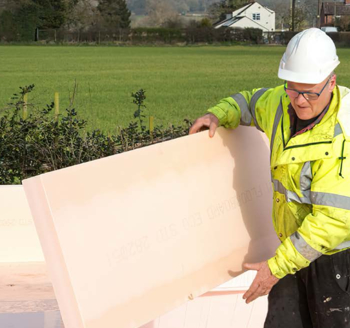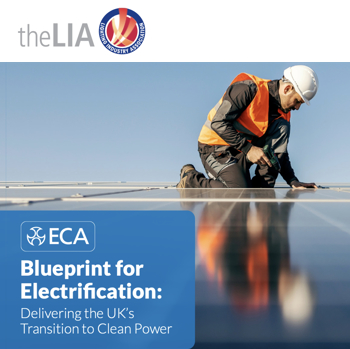Estimate
The term ‘estimate’ is a very broad one that refers to any activity that attempts to quantify something. In the construction industry, it is typically used in relation to the approximate costs associated with a construction project, used, for example to assess the viability or affordability of the project or aspects of it.
An estimate is an attempt to predict the likely expenditures associated with a project as accurately as possible. The degree of detail and the accuracy of estimates will typically increase as the project progresses, more decisions have been made, and more information is available, however, their true accuracy only becomes apparent once the project is complete and the actual costs incurred.
At the outset, estimates may be made to help determine whether a project is affordable and to set a budget. They will then be used to test design options to ensure they are in line with the budget.
A pre-tender estimate (PTE) is a final estimate of the likely cost of the works that are described in completed tender documents prepared to seek tenders (offers) from prospective suppliers.
Contractors, subcontractors and suppliers will then prepare definitive cost estimates to submit tenders in the construction bidding process to compete for the award of contracts.
There are a number of methods available for estimating, depending on the stage of the project and the information available:
- Benchmarking, which is a process by which other similar projects are used as comparisons.
- Breaking down an overall estimated construction cost into percentages for different elements, based on the experience of the cost consultant.
- Measuring defined quantities from drawings.
For more information see: Types of estimating.
Initial cost estimates might include wider project costs that the client might incur, such as; fees, equipment costs, furniture, the cost of moving staff, contracts outside of the main works, and so on. Later in the project, estimates are likely to focus on the construction cost of the project. It is important to be clear therefore what costs are being included in estimates, and estimates might be accompanied by a schedule of the assumptions that have been made.
Estimates will generally include contingencies, which are downside risk estimates that make allowance for unknown risks associated with a project. At the preliminary business plan stage, estimates might include a 15% contingency, but this may then be reduced as the project progresses and risks pass.
NB Cost prediction, Professional Statement, 1st edition, published in November 2020 by the Royal Institution of Chartered Surveyors (RICS), defines estimate as: A prediction or forecast of the resources (i.e. time, cost, materials, etc.) required to achieve or obtain an agreed scope of work (i.e. for an investment, activity, project, etc.).’
[edit] Related articles on Designing Buildings
- Analogous estimating.
- Base cost estimate.
- Benchmarking.
- Bottom-up estimation.
- Budget.
- Building works estimate.
- Cash flow projection.
- Common mistakes in bill of quantities.
- Contingencies.
- Cost overruns.
- Cost plans.
- Elemental estimating.
- Elemental method.
- Estimator.
- Expert opinion estimating.
- Extra over (EO).
- Initial cost appraisal.
- Irrelevant cost.
- Operational rate estimate?.
- Order of cost estimating.
- Parametric estimating.
- Post tender estimate.
- Pre-tender estimate.
- Spon's Price Book.
- Tender pricing document.
- Three point estimation.
- Top down estimating.
- Types of estimating.
- Unit rate estimating.
Featured articles and news
Cooling centres and cool spaces
Managing extreme heat in cities by directing the public to places for heat stress relief and water sources.
Winter gardens: A brief history and warm variations
Extending the season with glass in different forms and terms.
Restoring Great Yarmouth's Winter Gardens
Transforming one of the least sustainable constructions imaginable.
Construction Skills Mission Board launch sector drive
Newly formed government and industry collaboration set strategy for recruiting an additional 100,000 construction workers a year.
New Architects Code comes into effect in September 2025
ARB Architects Code of Conduct and Practice available with ongoing consultation regarding guidance.
Welsh Skills Body (Medr) launches ambitious plan
The new skills body brings together funding and regulation of tertiary education and research for the devolved nation.
Paul Gandy FCIOB announced as next CIOB President
Former Tilbury Douglas CEO takes helm.
UK Infrastructure: A 10 Year Strategy. In brief with reactions
With the National Infrastructure and Service Transformation Authority (NISTA).
Ebenezer Howard: inventor of the garden city. Book review.
The Grenfell Tower fire, eight years on
A time to pause and reflect as Dubai tower block fire reported just before anniversary.
Airtightness Topic Guide BSRIA TG 27/2025
Explaining the basics of airtightness, what it is, why it's important, when it's required and how it's carried out.
Construction contract awards hit lowest point of 2025
Plummeting for second consecutive month, intensifying concerns for housing and infrastructure goals.
Understanding Mental Health in the Built Environment 2025
Examining the state of mental health in construction, shedding light on levels of stress, anxiety and depression.
The benefits of engaging with insulation manufacturers
When considering ground floor constructions.
Lighting Industry endorses Blueprint for Electrification
The Lighting Industry Association fully supports the ECA Blueprint as a timely, urgent call to action.





















Comments
[edit] To make a comment about this article, or to suggest changes, click 'Add a comment' above. Separate your comments from any existing comments by inserting a horizontal line.